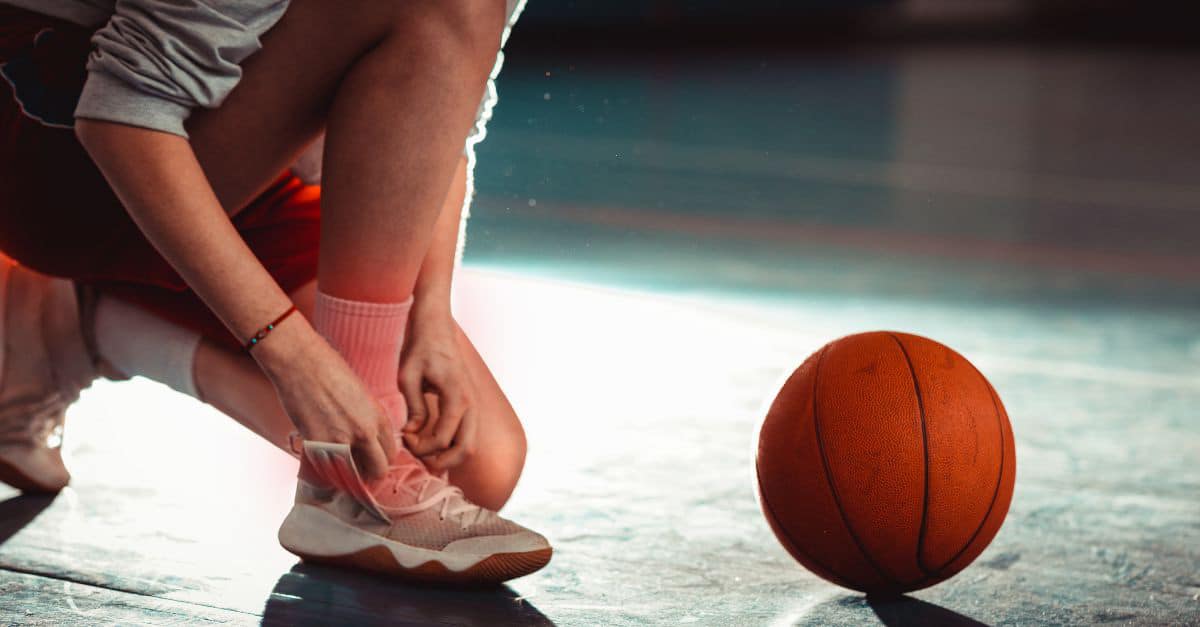’Tis the Season of Ankle Sprains
As the cold weather approaches and sports move indoors, we tend to see more ankle sprains coming through the office. Unfortunately, these injuries can be nagging, recurrent, and frustrating for many athletes throughout their careers. For this month’s article, we dive into the diagnosis, prevention, and treatment of all things ankle.
What is an ankle sprain?
An ankle sprain occurs when the ligaments that support the ankle are stretched beyond their limit. Sprains are rated and treated based upon how much these ligaments stretch.
The majority of ankle sprains occur on the lateral, or outside, aspect of the ankle and can vary from a small stretch to a complete tear. These injuries are common in sports that require quick movements, cutting, jumping or landing( e.g. basketball, soccer, volleyball etc.) Sprains are also common on uneven ground and we frequently see them in runners who hit a ditch on the road or trails, or even just a mis-step through a parking lot.
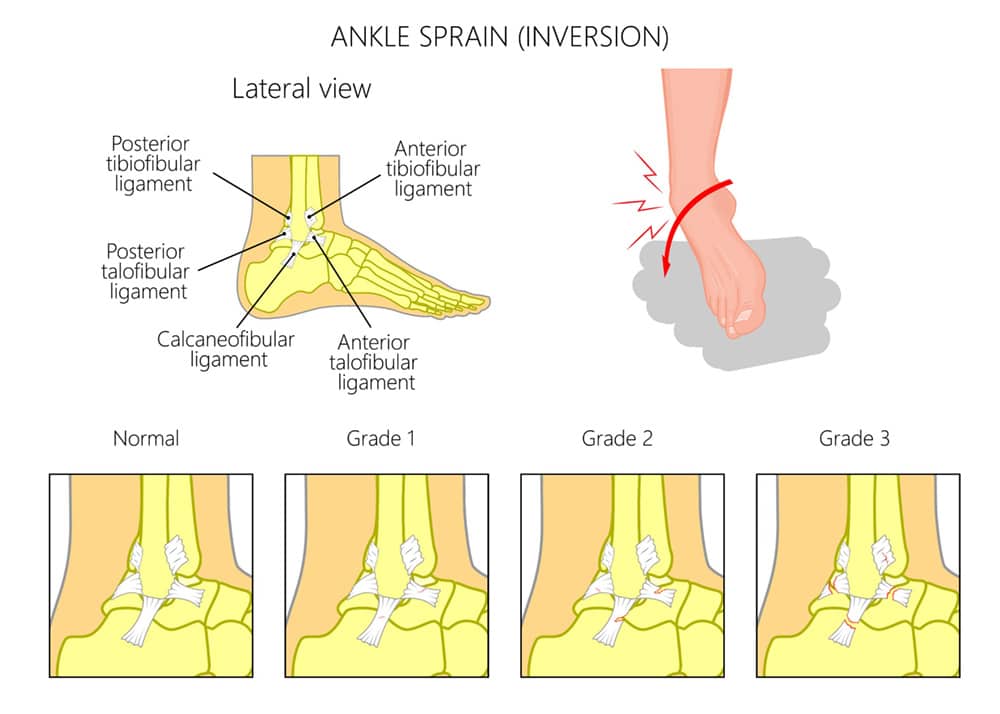
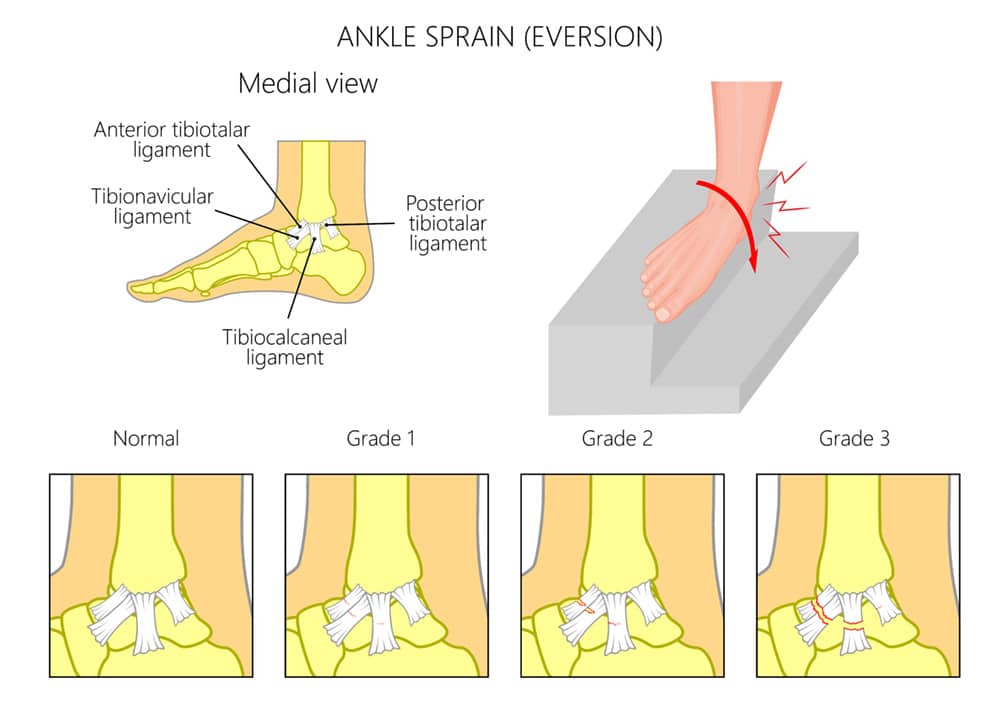
The biggest risk factor for an ankle sprain is the history of a previous ankle sprain. If you are in the sports world, you can probably think of a teammate who always is rolling their ankle, or won’t even attempt to play without wearing their ankle braces. Unfortunately, some people are more prone to this injury, and due to the varying treatment durations depending on the severity of the sprain, many athletes choose to brace and hopefully prevent future injury to the area.
How are ankle sprains diagnosed?
There are multiple routes you can take when it comes to diagnosing an ankle sprain. Typically, if it swells and is quite unstable, people head right to the orthopedist for imaging. Imaging may include an X-ray or MRI, depending on the clinical presentation.
There are also in-office tests that a physician can complete in order to determine the grade of the sprain. Grades are scored from 1-3; 1 being mild and 3 being severe. Additional information considered when grading a sprain is any associated swelling, tenderness or instability noted upon examination.
How long does a sprained ankle take to heal?
As you can imagine, the treatment and return to play plan cannot be established until the severity of a sprain is determined. Grade 1 sprains may be treated with rest and stabilizing exercises for a few short weeks whereas a Grade 3 sprain will likely include immobilization of the joint and significantly more rehabilitation time (6-8 months or longer).
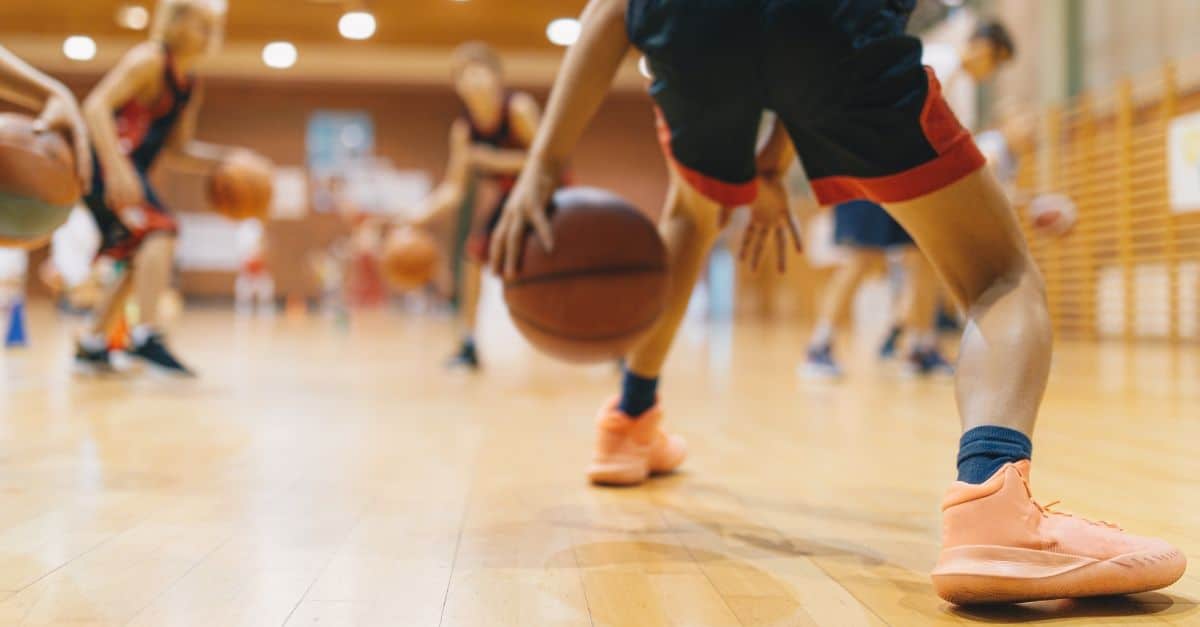
How do I prevent an ankle injury?
As you have probably figured out by now, True Sport Care tends to dedicate a lot of our focus to the prevention of injuries before they occur. I personally treat a lot of basketball players, so much of their pre-season athletic care is focused on ankle stabilization and strength. While I cannot prevent any unexpected traumatic injuries (for example – a player gets hit while landing from a lay-up and rolls the ankle), we can strengthen the joint to hopefully handle the impact more effectively.
I always have my patients in socks or barefoot for our ankle exercises, as I want them to learn to stabilize themselves as opposed to letting a sneaker do the work for them. Here are some of the exercises that we include in the ankle stabilization and strength protocol:
- single leg jumps (both forwards/backwards, and side-to-side),
- single leg landing from a box,
- single-leg step-ups with focus on stability,
- and foot drills walking on all planes of the foot.
These athletes are often shocked both at how unstable they feel during the exercises and also how quickly they notice improvement when working through the exercises consistently.
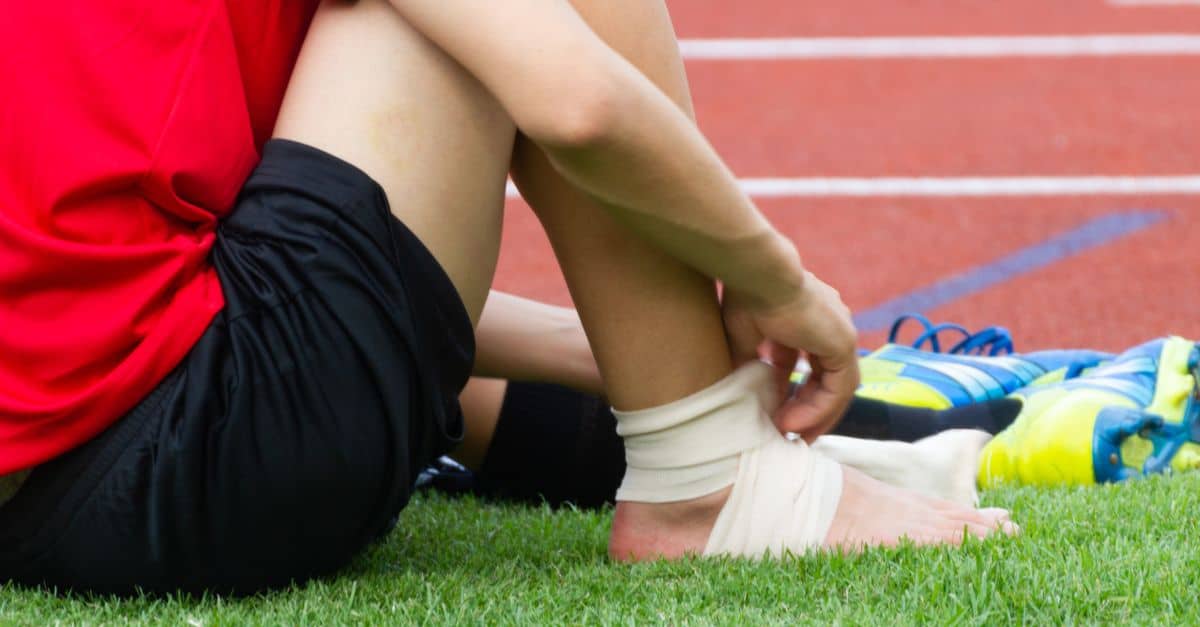
Should I brace the ankle after an ankle sprain?
This is a question that I get asked in the office frequently, and not just in regards to ankles. In my perfect world, we would not need braces at all. Our bodies would be trained and prepared for all potential impacts of play. I never want anyone to rely on bracing, and I don’t want athletes wearing an ankle brace in hopes of preventing injury to their ankle.
However, like most things in life, there is a time and a place for everything. For example, I currently treat a high school varsity basketball player who cannot seem to stop rolling his right ankle. He is in the middle of his senior season and so far has gotten lucky with mild sprains that we can quickly treat and clean up. However, luck can only get us so far and given how hard he plays, we have decided to have him braced for the remainder of his season. It is more important to us currently to keep him upright and on the court for his senior season than it is to have him unbraced and fix the issue for good. But trust me, once this season is over, he will be out of the brace and we will be hitting the rehab process hard.
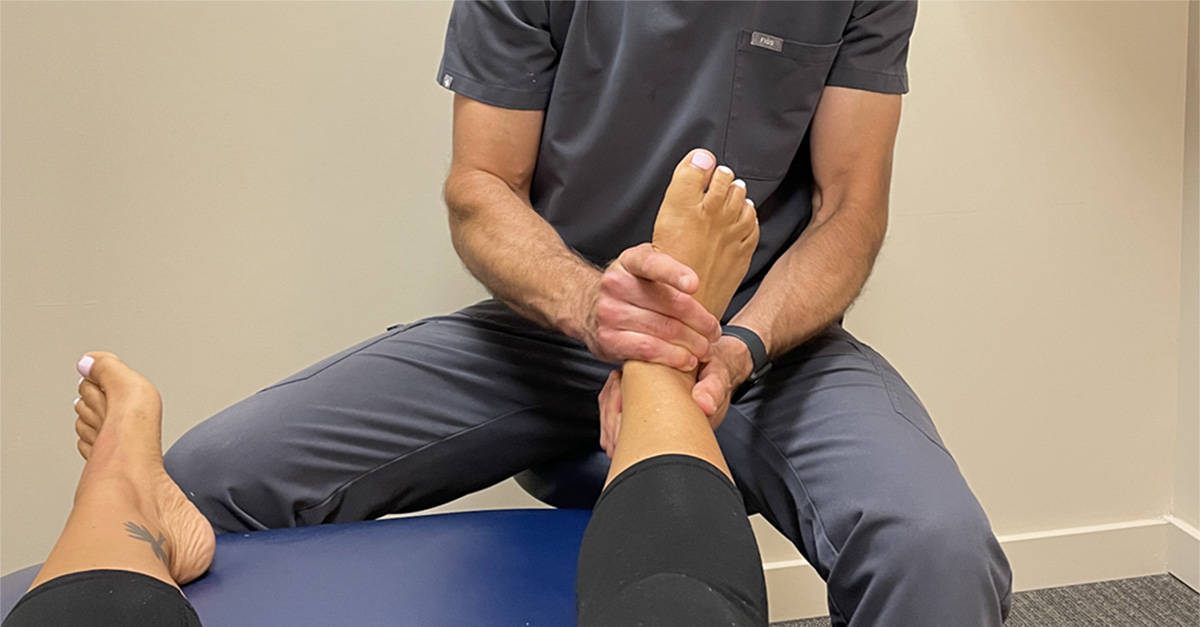
How to treat a sprained ankle?
The treatment of ankle sprains looks similar to the prevention of them as well. Of course, treatment will vary depending on the severity of the sprain. Our sports medicine and chiropractic office follows this protocol:
- Joint mobilization through chiropractic adjustment of the ankle joint. Care may begin with simple mobilizations of the joint intended to flush out swelling and begin to re-stabilize the affected tissues. Many people don’t realize that a chiropractor can help with recovery from an ankle sprain. An ankle joint adjustment will help to realign the bones and restore proper alignment. Some practitioners may opt to use ultrasound as a passive modality early in care as well.
- Instrument Assisted Soft Tissue Manipulation (IASTM). At True Sport Care, we use instrument-assisted soft tissue therapy to aid the healing of ligaments injured in an ankle sprain. This technique guides fibroblasts to form a more organized scar, balancing the need for stability with the preservation of movement and fascial gliding. Our goal is to ensure that the healing process supports both the protection and functionality of the affected area.
- Rehabilitative exercise program. As long as appropriate, I typically attempt to have my patients weight-bearing as quickly as possible, even if just in small doses. As they get more comfortable and begin to “trust” the ankle again, we begin loading the joint and strengthening the surrounding muscles.
- At-home ankle-strengthening exercises. To help with healing and recovery of a sprained ankle, I will prescribe at-home therapeutic exercises. The exercise prescription will be based on the muscular weaknesses identified during the muscle testing and the immediate need to strengthen the ankle joint.
How long is the ankle sprain recovery time?
Ankle injury rehabilitation and recovery can be a frustrating process, as it can be slow and feel daunting to an eager athlete looking to return to play. However, I personally will not clear anyone to return to activity until their movement looks symmetric and fluid. I joke that their rehab is complete once I forget which ankle was the injured one. The reason that I stress this concept is that if they are favoring the leg in any way, they are putting themself at risk for re-injury quickly upon return. If anyone is attempting to rehab their own ankle injury, I highly recommend they remember this concept as well.
If you have suffered the unfortunate circumstance of spraining an ankle, you know that recovery can be an aggravating experience. If you are an athlete who plays a sport with running, jumping or cutting, or your playing surface tends to be uneven, I highly recommend that you implement some form of strengthening exercises into your routine. Ankle strengthening does not require fancy equipment, gym memberships or even workout attire. Completing simple exercises can prove to be a great prevention method to hearing the dreaded “6-8 weeks” of time out of the game or off the running trails. Try these Foot Drills that we often prescribe to our patients after ankle or any other lower body injuries.
And as always, whether you are in the prevention or treatment phase of this article, I highly encourage you to seek the guidance of a sports medicine professional. I may be biased, but the chiropractic and sports medicine team at True Sport Care does a great job at keeping our athletes in the game and minimizing downtime due to pain or injury.
